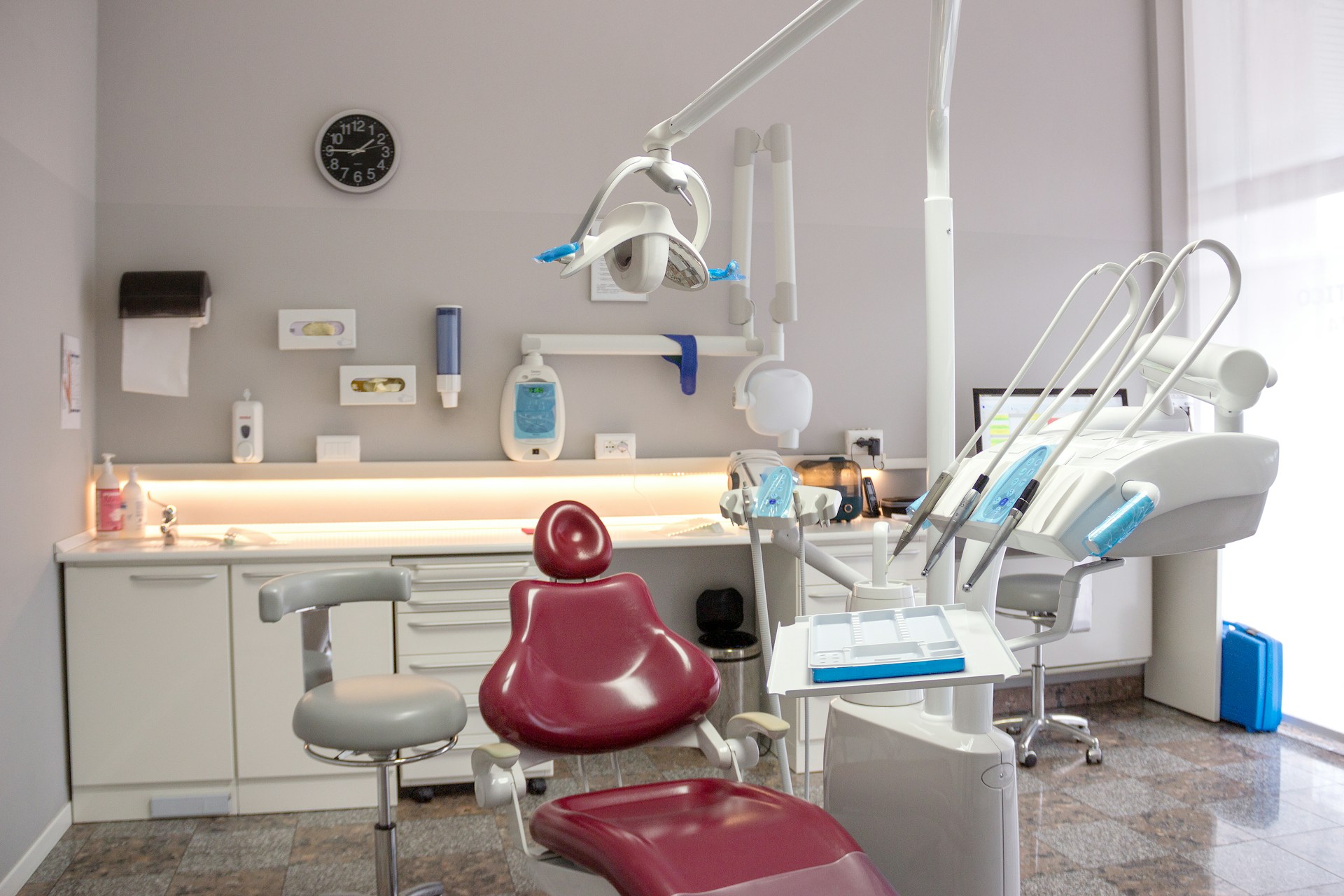How to Recover Revenue from Patients Who Haven’t Scheduled in 6+ Months Using AI Outreach

Every dental practice sits on a goldmine of dormant revenue—inactive patients who haven't visited in months but could be reactivated with the right approach. Modern AI-powered outreach systems transform this lost revenue into predictable monthly income by automating personalized, multi-channel campaigns that achieve significantly better results than manual efforts while requiring zero staff time after setup.
Key Takeaways
- Dental practices lose 17-25% of patients annually, with top practices maintaining only 3% attrition
- Each lost patient represents $12,000-15,000 in lifetime value to the practice
- Only 41% of new patients return after their first visit
- Automated appointment reminders reduce no-shows by 22.95%
- 70-80% of new patient referrals come from existing patients
- 30% of patients prefer text messages while 65% over age 35 prefer email reminders
The Hidden Revenue Crisis in Your Patient Database
Your practice is hemorrhaging money through patient attrition. Research from Dental Intelligence analyzing over 4,000 dental offices reveals the average practice loses 25% of patients annually—significantly higher than the historical 17% figure. For a typical 2,000-patient practice, this means losing 400-500 patients yearly.
The financial impact is staggering. With each patient worth between $12,000 and $15,000 in lifetime value, a practice losing 400 patients annually forfeits $4.8 to $6 million in potential revenue. This doesn't account for the compounding effect when only 41% of new patients return after their initial visit.
Beyond pure economics, high attrition cripples growth potential. Since 70-80% of new patient referrals come from your existing patient base, losing patients means losing your most effective marketing channel. Top-performing practices maintain just 3% attrition rates, proving this revenue loss isn't inevitable.
Why Manual Reactivation Methods Fail
Traditional reactivation approaches fail because they demand extensive staff time while delivering minimal results. Manual campaigns require:
- Pulling inactive patient reports from practice management software
- Creating personalized messages for different patient segments
- Making individual phone calls during business hours
- Tracking responses across multiple channels
- Following up with non-responders repeatedly
TNT Dental reports that most practices don't even know their attrition numbers, let alone have time for comprehensive reactivation campaigns. With a 20% target attrition rate, practices should plan to lose 30-35 patients monthly—but recovering them requires systematic effort most teams can't sustain.
The results reflect this challenge. Manual reactivation efforts typically achieve dismal response rates compared to automated campaigns that leverage data analytics to identify high-probability targets and optimal contact timing.
How AI-Powered Multi-Channel Campaigns Transform Results
Modern AI reactivation orchestrates sophisticated sequences that adapt to patient preferences and behaviors. The most effective campaigns follow a proven multi-channel framework:
Text Message Initiation
- 30% of patients prefer texts for appointment communications
- Messages are read within minutes
- Simple scheduling links enable immediate action
Email Follow-Up
- 65% of patients over 35 prefer email
- Educational content reinforces oral health importance
- Special offers incentivize return visits
Direct Mail Support
- Reaches non-digital patients
- Physical reminders have staying power
- Includes appointment cards and practice updates
Strategic Phone Calls
- Personal touch for high-value patients
- Wellness checks rather than sales calls
- AI can now handle these automatically
Research shows 53% of patients prefer reminders 1-3 days prior to appointments, making timing crucial for campaign success. This orchestrated approach generates significantly higher response rates than single-channel efforts.
The Financial Mathematics of Automated Reactivation
The ROI from AI reactivation proves compelling across every metric. With each patient worth $12,000-15,000 in lifetime value, recovering even a small percentage of inactive patients generates substantial revenue.
Consider the impact on a typical 2,000-patient practice:
- Annual attrition at 20%: 400 patients lost
- Reactivation success at 10%: 40 patients recovered
- Revenue recovered: $480,000-600,000 annually
Beyond direct revenue, automation creates operational efficiencies. Automated reminders reduce no-shows by 22.95%, saving thousands in lost production time. Staff previously spending hours on phone calls can focus on patient care and other revenue-generating activities.
Implementation Strategies That Deliver Results
Success requires strategic implementation rather than simply purchasing technology. The most effective approach follows this framework:
Phase 1: Database Analysis
- Calculate your current attrition rate (TNT Dental formula)
- Identify patients inactive 18-24 months
- Segment by treatment history and value
Phase 2: Campaign Configuration
- Set up multi-channel sequences
- Customize messaging for segments
- Configure automated booking systems
Phase 3: Launch and Optimize
- Start with highest-value segments
- Track response rates by channel
- Adjust timing and messaging based on results
Practices not prescheduling hygiene appointments lose 15-18% more patients, making automated recall systems essential. The key is treating reactivation as an ongoing process rather than one-time campaigns.
Large implementations scale effectively. Crescent Family Dental leveraged mConsent's reactivation program to convert their database of 2,500 inactive patients into 40+ additional appointments monthly. January campaigns achieve higher response rates due to renewed insurance benefits and health resolutions.
Technology Solutions for Scalable Reactivation
The dental software market offers numerous solutions for patient reactivation, each with different capabilities:
Communication Platforms
- Automated text and email reminders
- Two-way messaging capabilities
- Integration with practice management systems
Analytics Solutions
- Patient segmentation tools
- Attrition rate tracking
- ROI measurement capabilities
AI-Powered Systems
- Conversational AI for phone calls
- Predictive analytics for targeting
- Personalized messaging at scale
When selecting technology, prioritize seamless integration with your existing systems and the ability to handle multi-channel campaigns. The best solutions combine automation with customization capabilities to maintain your practice's personal touch.
Why Arini Delivers Superior Reactivation Results
While numerous platforms offer basic reactivation capabilities, Arini delivers a fundamentally different approach through its AI-native patient engagement platform specifically engineered for dental practices seeking to reduce missed opportunities and maximize revenue recovery.
Arini's Workflow Engine transforms reactivation from periodic campaigns into continuous revenue generation. Practices can build complex sequences using plain English prompts like "Text patients with no appointment in 6 months, call if no response within 3 days, alert front desk for high-value patients." This intuitive approach ensures consistent patient engagement that improves scheduling speed without requiring technical expertise.
The platform's Outbound Call Campaigns specifically target the reactivation challenge by automatically detecting patients with no appointments booked in the next six months and initiating personalized phone outreach. Unlike generic reminder services, Arini's AI receptionist conducts actual conversations, handling objections and booking appointments directly into your practice management system. This capability helps practices convert recall lapses to reactivated patients without any staff involvement.
What sets Arini apart is the white-glove onboarding where their team programs your AI receptionist to mirror your exact front desk procedures. This customization ensures reactivation calls maintain your practice culture while scaling infinitely. The platform helps reduce front desk labor costs by automating not just reactivation but the entire patient communication workflow.
For practices serious about never missing revenue opportunities, Arini combines inbound call management with proactive outreach. The system converts no-shows to confirmed visits, improves patient satisfaction, and optimizes schedule utilization. Arini's enterprise solutions provide the customization needed for unique practice workflows. Book a demo to see how Arini transforms inactive patient databases into consistent revenue streams.
Frequently Asked Questions
How quickly can I expect to see results from AI-powered patient reactivation?
Most practices see initial results within 2-4 weeks of implementation. The key is allowing the system to run continuously—automated campaigns work 24/7, identifying and contacting patients at optimal times. Since 53% of patients prefer reminders 1-3 days before appointments, proper timing significantly impacts success rates. Practices typically achieve steady-state performance within 60-90 days.
What's the actual cost comparison between AI reactivation and traditional methods?
The economics heavily favor automation. Consider that acquiring new patients costs significantly more than retention efforts, and 70-80% of new referrals come from existing patients. With each reactivated patient worth $12,000-15,000 in lifetime value, recovering just a few patients monthly provides substantial ROI. The real savings come from staff time—automation eliminates hours of manual calling that can be redirected to patient care.
Which inactive patients should I target first for maximum ROI?
Start with patients inactive for 18-24 months who have the highest probability of returning. Prioritize segments in this order: patients with unfinished treatment plans, those due for hygiene recalls (remember that practices not prescheduling lose 15-18% more patients), patients with good insurance coverage, and finally general inactive patients. Focus on your highest-value patients first to maximize immediate revenue impact.
How do I prevent reactivation messages from annoying patients?
Modern AI platforms prevent message fatigue through intelligent sequencing and preference management. Since 30% prefer texts while 65% over 35 prefer email, systems should adapt to individual preferences. Space touchpoints appropriately, vary messaging monthly, and honor opt-out requests immediately. Frame outreach as wellness checks rather than sales pitches for better reception.
Can small practices justify the investment in AI reactivation technology?
Absolutely. Even small practices with typical attrition rates of 10-40% are losing substantial revenue. A 1,000-patient practice losing 20% annually (200 patients) forfeits $2.4-3 million in lifetime value. Recovering just 10% of those patients (20) generates $240,000-300,000—far exceeding any technology investment. The top 10% of practices maintain just 3% attrition, showing what's possible with proper systems.









